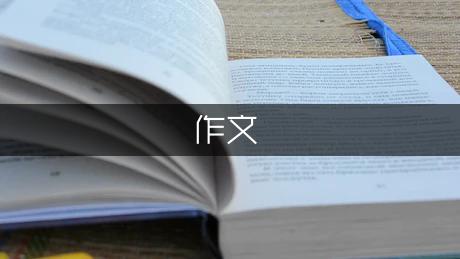在一般情况下,"admit"表示"许入"、"进入"(allow somebody or something to enter)或"承认"(acknowledge)的意思;而"admit of"则表示"容许"(allow of)或"容有"(leave room for)之意。例如:
Thisticketadmitsonepersononly.

此券只准一人入场。
Iadmittedhimtothelecture.
我准许他入内听讲。
Hehasadmittedthefact.
他已承认此事。
Thismatteradmitsofnodelay.
此事刻不容缓。
Thiswordadmitsofseveralinterpretations.
这个词可作几种解释。
"Admit"的主语既可以是物,也可以是人,而"admit of"的主语只可以是没有生命的事物。例如,我们不能说:Ican'tadmitofyourdoingit,而只能说:Ican'tallowyoutodoit。再如,不可以说:Hecanadmitofnoquestion,而应该说:Hisveracityadmitsofnoquestion(他的诚信是勿容置疑的)。
值得注意的是,"admittance"和"admission"都是"admit"的名词,它们都有"准入"之意,但使用场合不同。一般来说,"admittance"用于直接的意义,即指准许某人进入某一场所;而"admission"则大都用于比喻意义,指准许进入的权利、入场费或入会费。因此,“入场券”译作"admission ticket",不译作"admittance ticket"。"如非公事,不得擅进(非请勿进)"则译作"Noadmittanceexceptonbusiness"。现将这两个词作一比较:
Theyrefusedhimadmittancewhenhearrived.
他抵达时他们拒绝他入场。
Theygrantedhimadmission.
他们准许他入会。
此外,"admit"用作解释"承认"时,之后可以接动名词或从句,但不能接动词不定式。例如:Headmitshavingseenthebook 或 Headmitsthathesawthebook。但不可以说:Headmitstohaveseenthebook。
在现代英语中,有时我们可以看到"admit to"这么一个短语,其意义相当于"confess to"(承认),例如:
Inspitofalltheevidenceagainsther,sherefusedtoadmittothecrime.
虽然所有证据都对她不利,但是她拒绝承认犯罪。
「相似词语辨析「3」across和cross」2
across vs. cross
“across”和“cross”这两个单词在拼写上仅差一个字母,但词*不同,使用场合也不同。
across 介词
表示“横越”、“渡过”
例句:
- My house is across the harbour, in the vicinity of the Kowloon Park.
(我的房子在海港对岸,靠近九龙公园。)
- They live across the Central Plaza.
(他们住在*广场对面。)
cross 及物动词
表示“横穿”、“越过”
例句:
- Everyone shouts “kill it!” when a rat is seen to run across the street.
(老鼠过街,人人喊打。)
- He has crossed the border into another territory.
(他已越过边界进入另一个领土。)
- Many steel arch bridges cross the Mississippi in its lower reaches.
(在密西西比河的下游,许多拱形铁桥横跨河面。)
名词
除了作为动词,cross 还可以用作名词:
- crossroad 十字路口或横马路
- crossroads 十字路口
- cross-reference 前后参照、互见条目
- crossing 渡口、横道线或交叉点
注意:
- crossroads 前面可以用冠词 a,但 -s 不能省略。
- cross-reference 专门指同一书刊中前后互相参阅的说明。
「相似词语辨析「7」after和behind」3
Certainly, here's a refined version:
After and behind
When used as prepositions,"after"and"behind"are often confused because they both convey the idea of"later than"or"following."However, they have several distinctions:
Generally,"after"denotes the sequence of time, meaning"later in time than"; whereas"behind"denotes the position of something relative to another object, meaning"at the rear of."For example:
I shall be free after ten o'clock.
十点之后我有空。
The national stadium is located behind the hill.
国家运动场在山岗的后面。
"After"is commonly used to denote sequence, meaning"following"or"in succession"; while"behind"implies being hidden, at the back, or left behind. For instance:
After you, please!
您先请!(Polite phrase used when entering or exiting a room)
You should put the direct object after the indirect object.
你应该把直接宾语放在间接宾语之后。
The policemen are searching for the robbers door after door.
警察正在挨家挨户地搜查劫匪。
Day after day and year after year...
日复一日,年复一年……
Don't stand behind the door.
不要躲在门背后。
Don't speak evil of a man behind his back.
不要在背后说人坏话。
Who is behind the scenes?
谁是幕后人?
Those smugglers ran away and left no trace behind them.
那些走私客逃走时没有留下任何痕迹。
In some contexts,"after"and"behind"can be interchangeable but with different nuances:
Shut the door after you. (1)
Shut the door behind you. (2)
(1) This means"close the door as you leave,"with"after"implying the sequence of leaving and closing the door afterward.
(2) This means"close the door behind you,"with"behind"indicating the static state of the door after it's closed.










